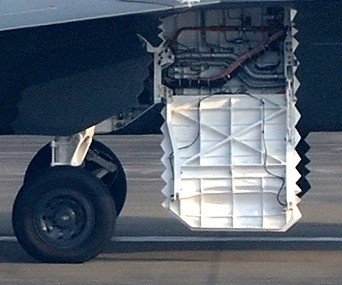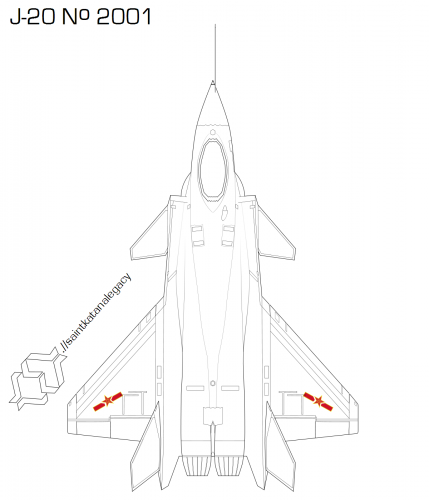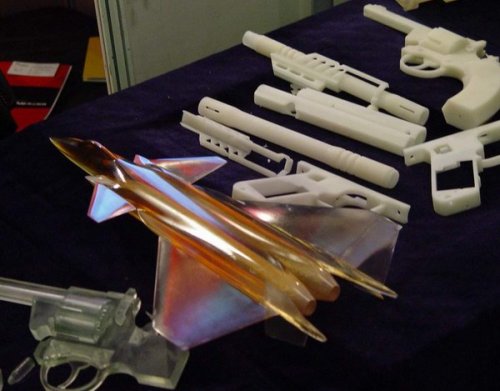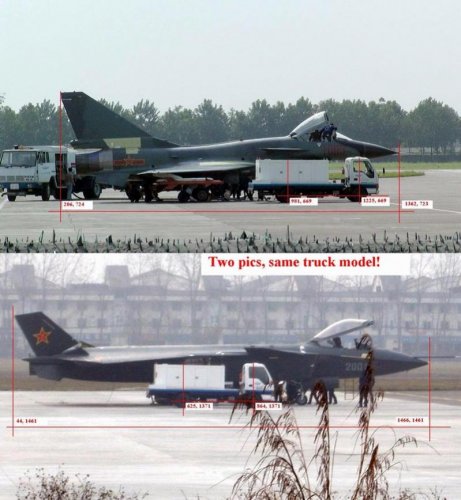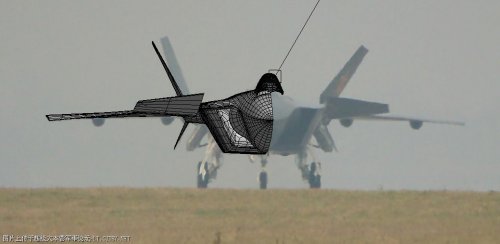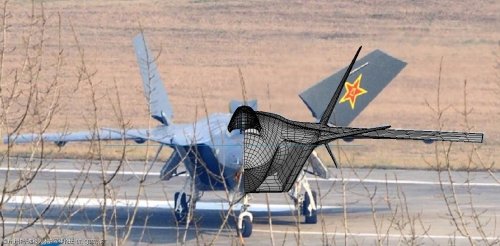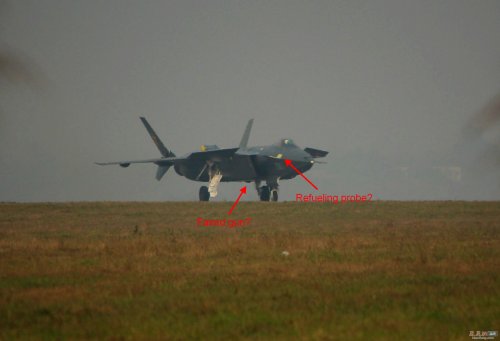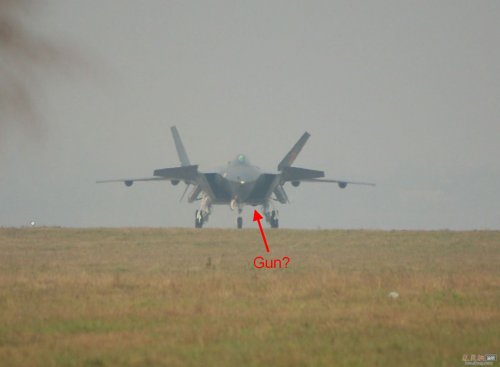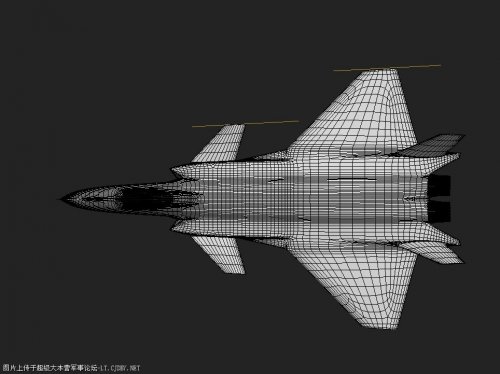Looks like this model shown a while ago (I forget where) was actually pretty damn close to the real thing, apart from a few details such as the tail shape and the length of the tail booms.
Regardless, what we've got so far is a pretty large twin-engine airframe with a canard-delta layout. Guessing about whether it is or isn't F-22 class LO is ridiculous until you see a lot more detail in the panel arrangement and the overall layout of the airframe. I will say that the clean lines, serrated doors, and pinched joints seem to indicate that they have put thought and effort into reducing the RCS, regardless of how low it turns out being. I've seen people mention in various places that the fact it is painted may indicate that it has already flown, given that aircraft like the J-10 and J-11 were seen flying trials unpainted, but my thought is that they've specifically done this to mask the actual complete appearance of the aircraft's external arrangement, access panels, doors, and the like. That makes it harder to fine-tune RCS estimates.
Right now it appears that no TVC is fitted, as the nozzles don't droop when the jet is powered down. Or, if TVC nozzles are fitted, they are likely electrically actuated rather than being driven by hydraulic pressure. Won't know until we see it maneuvering hard in flight, or otherwise employing the nozzles. With possible TVC, all-moving canards, and all-moving tails, it would appear that while the clean lines and planform seem to indicate a focus on speed, it isn't going to be a slouch in the maneuvering department either. However when I look at the layout I do sense that speed was a factor in the design.
It's a BIG airplane. Many estimates put it larger than the F-22A and T-50. This means a large internal fuel load, or a large internal weapons load, or a degree of both. Now, more fuel does not instantly translate into "it can outrange the Raptor or T-50". Given the comparative immaturity of Chinese fighter engine development, the 117S and F119 likely get better fuel economy. That's just speculation of course, but it makes sense from an analytical standpoint right now. There is also the issue of supercruise, which as far as we know China hasn't been flight testing all over the place. This all translates into what is likely an underpowered, underperforming prototype relying on off-the-shelf engines. Things will likely pick up if and when China gets a viable powerplant fielded, or if they have actually imported Russian engines.
Given that this appears to be a large aircraft with what likely amounts to good range and payload capability due to the internal volume, the real question is what the hell they want it for. Obviously they want to field it, I'm thinking more along the lines of intended role. Where does it fit into the future PLAAF? My guess, given the range this thing will have (closer to Su-27 or F-22 class rather than J-7 or J-10 class), it will likely serve as a replacement for the PLAAF's extant Su-27SKs, J-8IIs, and eventually unmodified J-11s. The range and a decent RCS may allow it to also be produced in a recon variant or with an uploadable recon sensor pack.
I'd estimate that the primary mission of the airframe is air combat, regardless of whatever air to surface capability it may have. China has stated that new air to surface missiles being developed now must fit into this things bays, alluding to the relatively high sit of the jet on the ground allowing for clearance under the fuselage of larger weapons than a typical BVR AAM. But, given China's current preference for standoff missiles rather than close-in weapons like a JDAM, even though they have developed such weapons, points to an air combat primary mission. A/S capability and mission will therefore likely be closer to the F-22A rather than the F-35, but with a ton of standoff missile platforms like the JH-7A and H-6 that really isn't a concern for the PLAAF or PLANAF.
The appearance of the aircraft also means that we can expect China's air defense weapons to become more effective in the future, specifically against LO targets. Having a legitimate LO airframe flying around makes it far easier to develop and optimize sensors and weapons to combat such aircraft. You can do a lot of work in simulations and with computer modeling, but at the end of the day being able to realistically evaluate such systems does make a difference. That's one aspect of this whole program that I for one feel is frankly being ignored.
At the end of the day, the J-20 looks like a serious step forward in China's military aviation program. The one potential drawback I can think of is that it seems like getting this thing ready to begin taxi and flight trials has slowed the J-10B somewhat. It could be argued that the J-10B, as a potential replacement for the Q-5/A-5 and extant J-7s, would be a more pressing requirement, but once the J-20 is zipping around on trials the J-10B should be back on track as well.
And that represents my preliminary thoughts on China's new toy.

